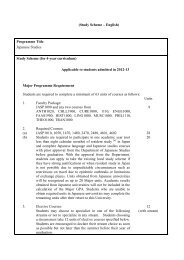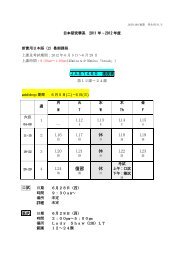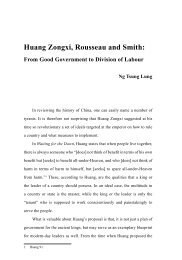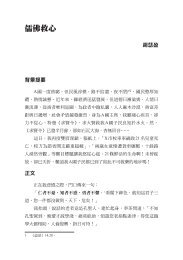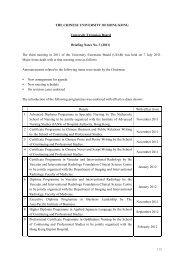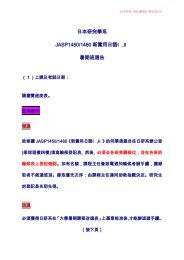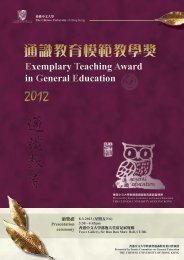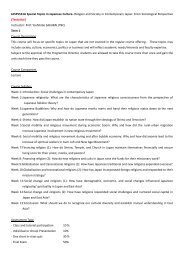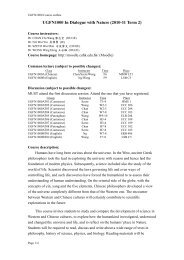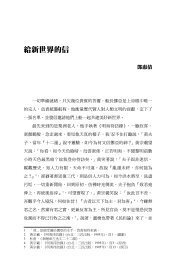ä¸è¼å ¨æ¸ - The Chinese University of Hong Kong
ä¸è¼å ¨æ¸ - The Chinese University of Hong Kong
ä¸è¼å ¨æ¸ - The Chinese University of Hong Kong
Create successful ePaper yourself
Turn your PDF publications into a flip-book with our unique Google optimized e-Paper software.
Special Topic: Assessment in <strong>University</strong> General Education Program<br />
independently, regardless <strong>of</strong> the project or task assigned. <strong>The</strong> student has<br />
reached a consistent conclusion regarding his or her ability to independently<br />
solve problems. A second example that distinguishes the fourth and fifth<br />
levels <strong>of</strong> the taxonomy relates quite well to pr<strong>of</strong>essional ethical standards.<br />
At the fourth level, learners accept pr<strong>of</strong>essional standards while at the fifth<br />
level this acceptance leads the student to display a pr<strong>of</strong>essional commitment<br />
to ethical practice on a day-to-day basis. A more complete description <strong>of</strong> the<br />
taxonomy as well as instructional examples can be found in Appendix I.<br />
Critiques <strong>of</strong> the Affective Learning Construct<br />
Given the existence <strong>of</strong> the affective learning taxonomy, one wonders<br />
why the affective domain has not been recognized or utilized to guide<br />
curriculum development to the same degree as the cognitive taxonomy.<br />
<strong>The</strong>re are numerous factors that contribute to higher education’s collective<br />
aversion to the affective domain (Pierre & Oughton, 2007). Some faculty<br />
have questioned the necessity <strong>of</strong> specifying affective learning outcomes<br />
altogether. <strong>The</strong>y argue that affective learning is a by-product <strong>of</strong> cognitive<br />
learning and, therefore, affective learning outcomes do not need to be<br />
independently specified, taught, or assessed. On the surface, this assertion<br />
may seem reasonable, but much is gained when cognitive and affective<br />
domains are considered independently <strong>of</strong> one another. <strong>The</strong>re are, in fact,<br />
close parallels between Bloom’s taxonomy for the cognitive domain and<br />
Krathwohl’s taxonomy for the affective domain (Smith & Ragan, 1999). It is,<br />
<strong>of</strong> course, possible that participation in the higher levels <strong>of</strong> Bloom’s cognitive<br />
taxonomy (e.g., analysis, synthesis, evaluation) may imply a certain level <strong>of</strong>



